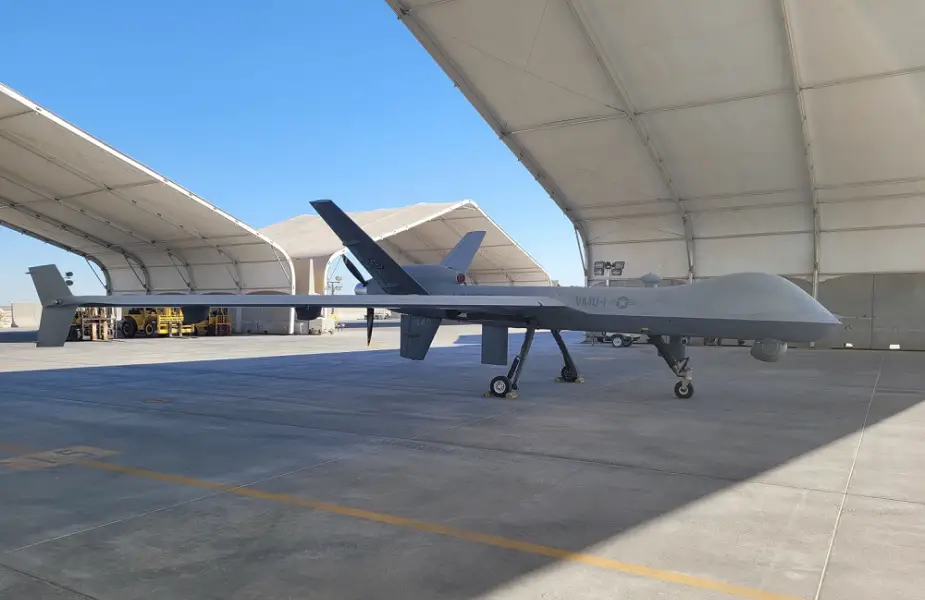On March 31st, the Marine Corps’ first MQ-9A Unmanned Aerial System achieved 10 thousand total flight hours in the Central Command area of responsibility, a major milestone for the modernization of the force.
Follow Air Recognition on Google News at this link
 Marine Corps’ first MQ-9A (Picture source: US Marine Corps Forces Central Command)
Marine Corps’ first MQ-9A (Picture source: US Marine Corps Forces Central Command)
The MQ-9A “Reaper” is a Remote Split Operations (RSO) product from General Atomics Aeronautical Systems Incorporated. The RSO capability revolutionizes military operations by allowing the system operator to be thousands of miles away from both the launching site, and airspace covered by the aircraft. VMU-1, a squadron at Marine Corps Air Station Yuma, Arizona, pilots the forward deployed Reaper, which has supported daily combat operations for Task Force Southwest in Afghanistan before its end of mission, and later 5th Fleet in the Arabian Gulf.
The Marine Corps took control of the MQ-9A in September of 2018, just over two and a half years from the 10 thousand flight hour milestone.
“The Reaper has proven operationally effective in the Central Command region. Not only does that further CENTCOM objectives, it also clears a key pathway to achieving the Commandants vision for the Marine Corps in the Indo-Pacific,” said First Lieutenant Kyle Daugherty, an Intelligence Officer, and MQ-9 lead for Marine Corps Forces, Central Command (MARCENT).
MARCENT has utilized the Marine Corps’ first MQ-9 assets to evolve the service as a force, capable of further integration of operations in naval, ground, air, and cyber domains. As the Marine Corps transitions to government owned, government operated employment of the MQ-9, this force design presents opportunities for similar implementation in the Indo-Pacific region.
The Commandant of the Marine Corps’ Force Design 2030 articulates his priorities and desired state for the service as it looks to modernize and align all efforts to the National Defense Strategy.
The Reaper is employed primarily as an intelligence-collection asset and secondarily against dynamic execution targets. Given its significant loiter time, wide-range sensors, multi-mode communications suite, and precision weapons, it provides a unique capability to perform strike, coordination, and reconnaissance against high-value, fleeting, and time-sensitive targets.
Reapers can also perform the following missions and tasks: intelligence, surveillance and reconnaissance, close air support, combat search and rescue, precision strike, buddy-lase, convoy and raid overwatch, route clearance, target development, and terminal air guidance. The MQ-9's capabilities make it uniquely qualified to conduct irregular warfare operations in support of combatant commander objectives.
















